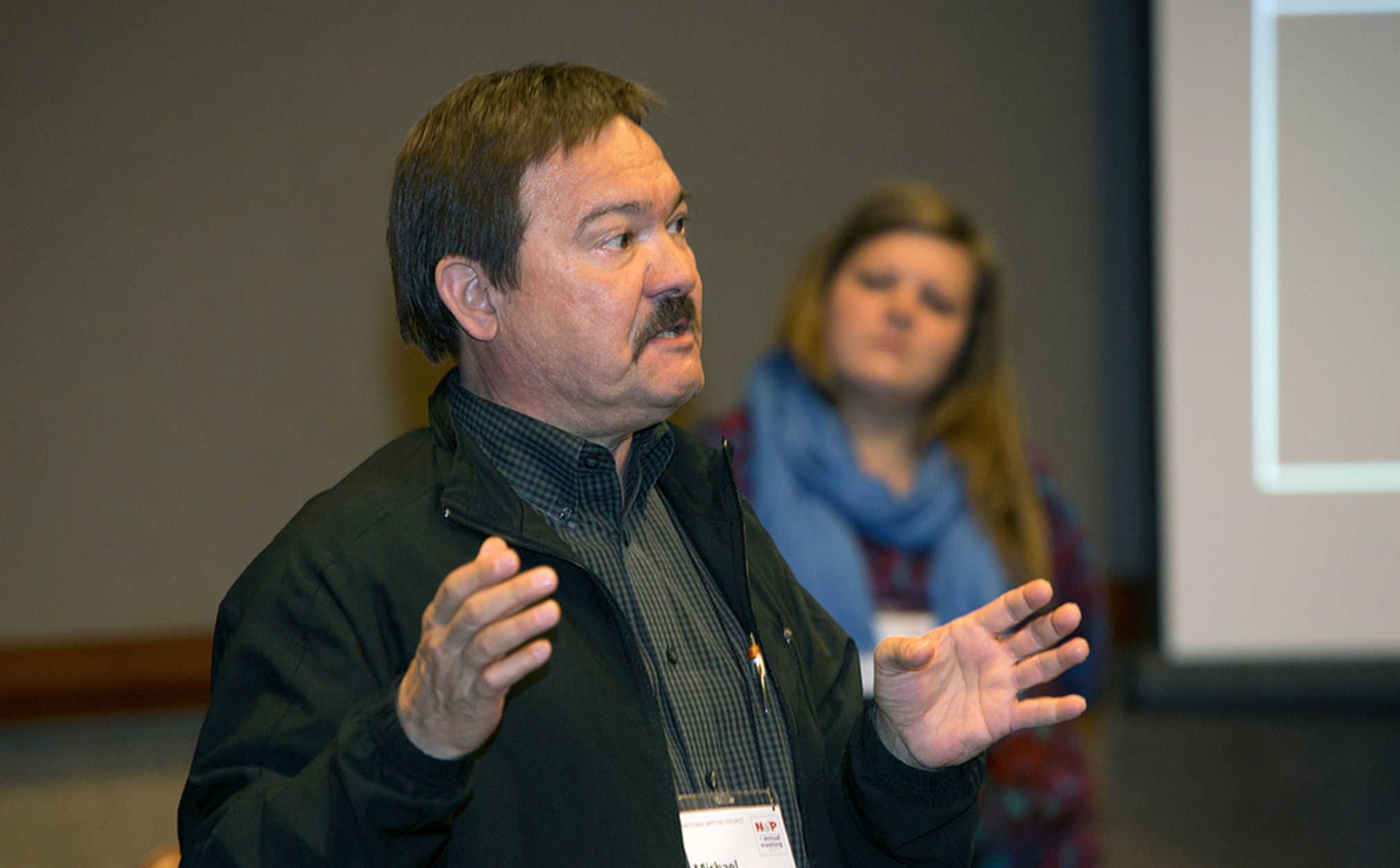By Michael Thompson (Mvskoke Creek)
“The truth about stories,” writes Native author Thomas King, “is that’s all we are.” He also quotes Nigerian storyteller Ben Okri, who said, “One way or another we are living the stories planted in us early or along the way, and we are also living the stories we planted—knowingly or unknowingly—in ourselves…If we change the stories we live by, we change our lives.”
An important part of my life’s story has been finding my voice as a Native educator and as a teacher of Native students. Another story that has changed my life is the National Writing Project.
For the past 24 years I have experienced firsthand the work that NWP does to support diversity in the teaching of writing, and I have often been struck by the parallels between the NWP model of professional development and the Native protocols I am familiar with.
In my personal life as a member of various Native communities, I have come to appreciate the great diversity that exists among the tribal nations in this country. However, I do believe that such a thing as a Native worldview does exist and that many tribes share its basic characteristics.
Almost all of the tribal people I know have a deep respect for kinship, simply put, the relationships that hold a community together. Native people, by and large, are also deeply rooted in particular places and consider themselves to be caretakers of those spaces and the living beings who share them. Finally, because most Indigenous notions of spirituality are holistic and non-hierarchical, there is a powerful sense of collaboration that drives everyday life rather than the competition that is the driving force of Western ideologies.
I have seen these same core values consistently present in the work of the National Writing Project. I know that NWP honors relationships among teachers. I know that NWP is dedicated to building community. I know that NWP is committed to place-based writing and to place-based initiatives. I know that NWP is collaboration at its finest.
As a Native educator, I have never found another professional organization whose principles seem more familiar to my heart.
That said, I want to urge all of my NWP friends and colleagues to please take a moment to consider new ways to incorporate Native writing into the work you do, wherever you teach, whatever circumstances your students exist in.
I won’t recount here the many talented Native writers who have made their mark on the national stage. I’m more concerned with the Native writing that may exist in your particular region of the country, the writing that represents the tribes who either live in your area or who once made your area their homeland. There are many fine tribal newspapers around the country that produce fine nonfiction on many matters of great concern to tribal people. There are excellent Native poets in every region. There are any number of tribal websites that contain important articles on tribal history and culture. There are Native novelists and essayists and historians and philosophers and writers of short fiction and drama who are little known simply because their work represents the lives of our most invisible Americans.
Here is the advice I offer: Take the time to learn about the important tribal people with deep ties to the place your students call home. Locate the Native writing that represents those Native communities. Share it with your students.
I am asking you to help insure that Native life, Native writing in America, has a small presence in all of our schools. If any group of educators can do this, it is us in the National Writing Project.
Finally, I have a story to share about tending a fire.
For many years, I was a firekeeper at a Native ceremony in Arizona (and I still help one of my relatives take care of his sweat lodge fire at least once a month). At this particular ceremony there were at least six or more firekeepers, and we kept a large fire burning night and day for seven days. It was a fire big enough to heat at least 200 stones for the 15-20 sweat lodges that were held every morning and evening. It was an immense responsibility and to do it well one had to understand a great deal about a fire, about building it, controlling it, feeding it, regarding it. At times the Arizona winds gusted up to 40 or 50 miles per hour. It was daunting.
In a sweat lodge one night, the head firekeeper gave all of us less experienced firekeepers this advice about becoming keepers of the fire: Go home, he said, wherever you live, in your backyard or in a small open space near where you live, and build the smallest fire you possibly can. He meant a fire with twigs or even splinters of twigs. Very, very small. Tiny. Take care of that little fire, he said, over and over until you understand it. Do it for days or weeks if that’s what it takes. But in the end, you’ll know everything you need to know about keeping fire.
I’ve taken his advice and he was right. You can learn everything about fire from the tiniest flame.
If each one of you takes what you learn about Native writing in your own area and use it to build the smallest blaze in your own classroom, and if you take care of it and give it due regard, in time you will become an expert at whatever intention resides at the heart of that fire. You really will.
Originally Published at Our NWP

Thank you for writing and sharing this, Michael…Your words have entered my heart and I’ll take them back to my community.
January 22, 2017 at 8:00 am